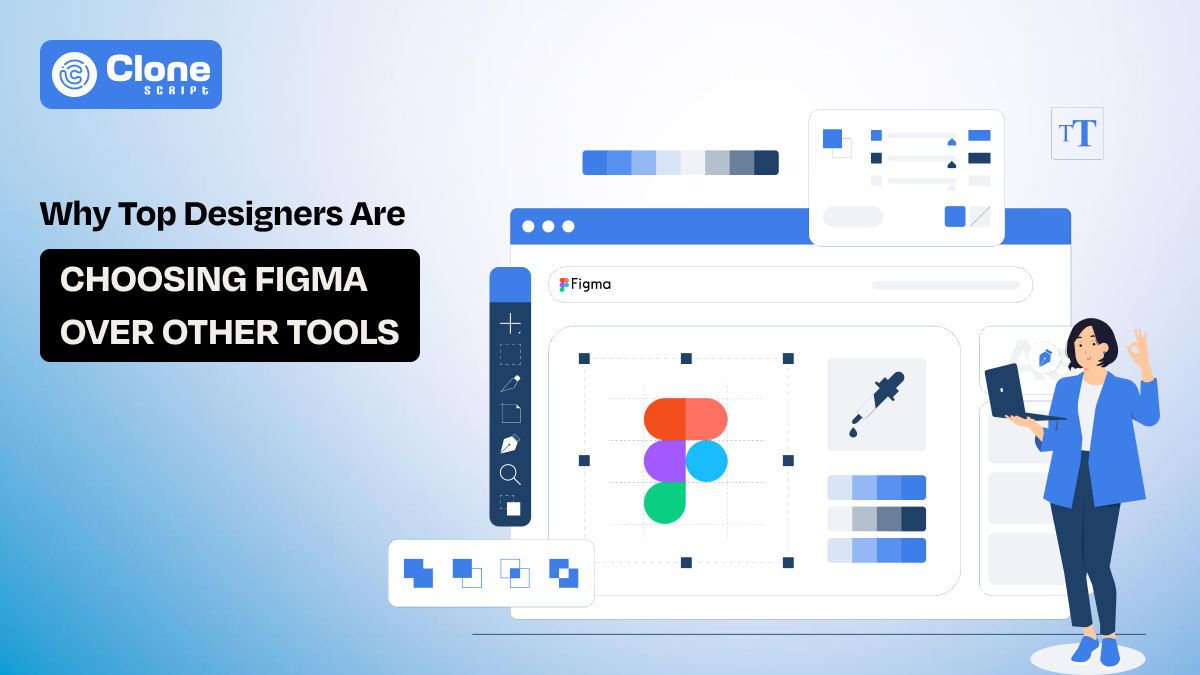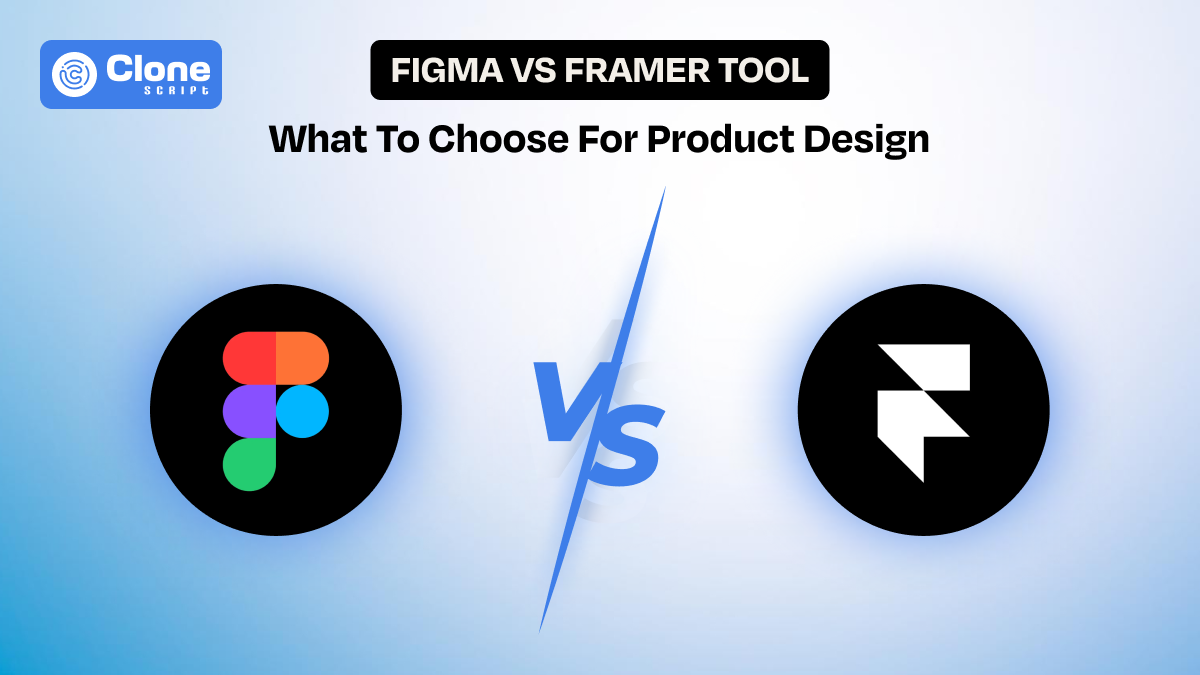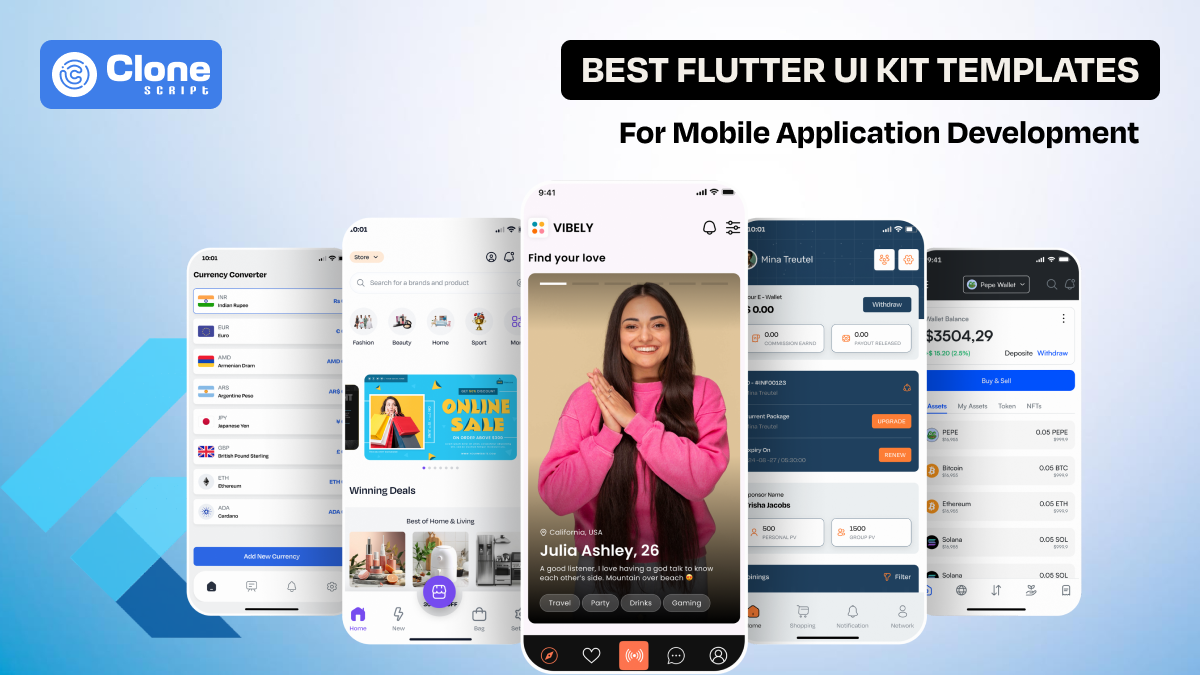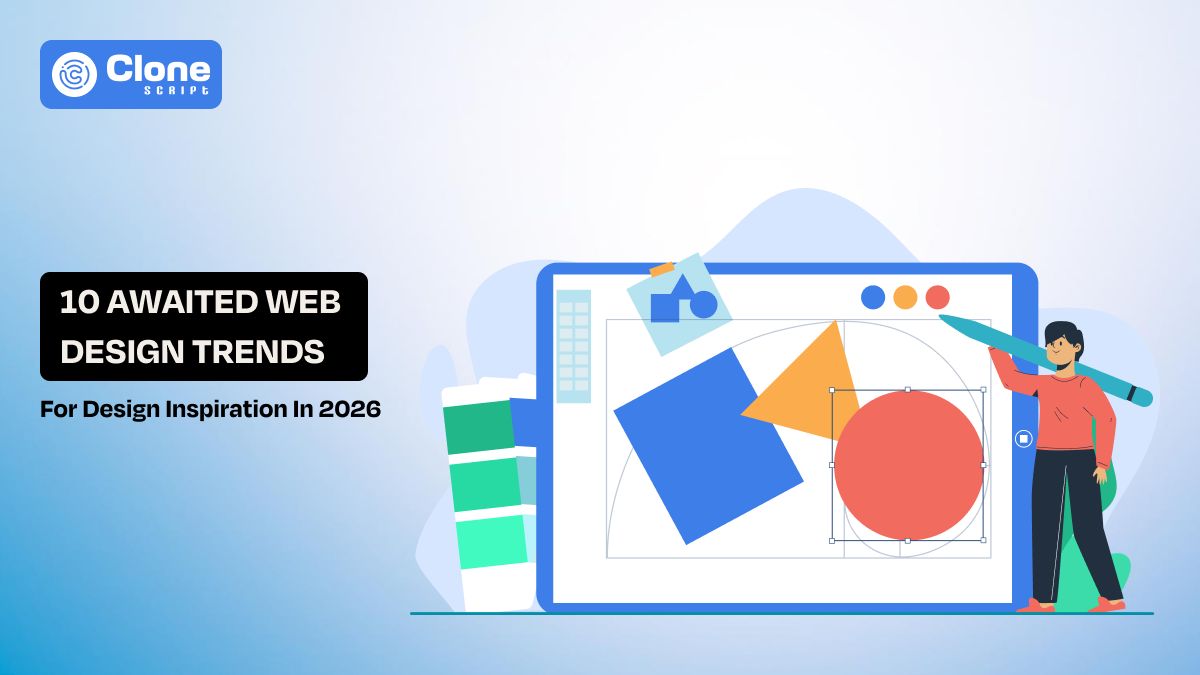Why Top Designers Are Choosing Figma Over Other Tools
Website design is part of web development, and it lays the foundation of project success. A beautifully designed interface isn’t just visually appealing. It determines user experience, engagement, and ultimately, the success of a digital product. But in today’s world, creating high-quality designs efficiently requires more than just skill. It requires the right tool.
This is where Figma comes in. Unlike traditional design software, Figma combines real-time collaboration, prototyping, and reusable components into one cloud-based platform. It is useful for multiple purposes, such as e-commerce website design, game app UI, or any SaaS platform.
Using this web design tool helps teams to work faster, maintain consistency, and deliver high-quality results. Ultimately, it fulfills the intention of delivering a standardized work to the client according to their brand goals.
This guide will help you understand why designers prefer Figma over Sketch, along with the role of Figma templates. You can also know the key features of this tool and other important things that make your web design work smoothly as you expected.
The Rise of Figma in the Design World
Figma’s journey started with a simple goal: to make design collaboration seamless.
Before Figma's introduction, designers relied on tools like Sketch or Adobe XD. But what was the real problem with these tools?
By using them, there’s no collaborative working feature. It means designers have to send the design files back and forth via email or cloud storage. This leads to version confusion and workflow inefficiencies.
But what’s special about Figma?
It broke these barriers by introducing a cloud-first platform.
Teams could now work simultaneously on the same design file and have the following advantages:
-
Comment directly within the project
-
See updates in real-time
This revolutionized the way Figma is used for web design projects. There is no longer a requirement to see multiple versions or wonder which file a developer should use.
You may be confused if Figma is only for website designing and prototyping, so can it be useful to developers?
Yes. Through its inspection tools, developers can extract CSS, measurements, and assets without needing third-party plugins. This built-in system ensures that designs are implemented accurately and consistently.
In essence, Figma isn’t just a tool; it’s a collaborative ecosystem. Agencies, startups, and even enterprise teams are now building their design systems, prototyping, and designing entire digital experiences using Figma.
Key Features That Make Figma Stand Out
Figma’s rise isn’t just about timing. It’s about functionality. Let’s explore the features that make Figma a key tool for designers and developers alike:
1. Real-time Collaboration
Imagine a scenario for e-commerce website development. A web designer in New York, a developer in London, and a project manager in Bangalore are all working on the same website mockup.
Figma’s cloud-based platform allows everyone to make edits, add comments, and see changes live. This not only improves efficiency but also fosters creativity through instant feedback.
2. Components & Design Systems
One of Figma’s most powerful features is its reusable components. Buttons, headers, and other UI elements can be created once and used across multiple screens or projects.
Changes made to a component automatically propagate wherever it’s used. This maintains brand consistency and reduces repetitive work. This is particularly valuable for teams building complex apps or websites where consistent design is critical.
3. Figma Prototyping
Figma prototyping lets designers create interactive flows without leaving the platform. You can link screens, add transitions, and simulate user interactions to test usability. This eliminates the need for separate prototyping tools to streamline the design-to-development handoff.
4. Cross-Platform Accessibility
Unlike Sketch, which is Mac-only, Figma works across Windows, Mac, Linux, and even in a browser. This cross-platform accessibility makes it ideal for distributed teams and freelancers who may not all use the same operating system.
5. Extensive UI Kits & Templates
Figma offers a thousand library of UI kits for web app designs, including mobile apps and websites. These templates help designers start projects quickly, maintain consistency, and focus on creativity rather than creating from the first step.
6. Developer Handoff
Figma’s inspect panel allows developers to extract CSS, view spacing, and download assets directly from the design file. This seamless integration reduces errors and miscommunication, ensuring that the final product matches the design vision.
Figma vs Other Design Tools Comparison to Look
While Sketch and Adobe XD were once industry standards, Figma has become the clear favorite among top designers. Let’s compare them:
|
Feature |
Figma |
Sketch |
Adobe XD |
|
Cloud Collaboration |
Real-time |
Requires plugins |
Limited |
|
Design Systems |
Full support |
Limited |
Moderate |
|
Platform Support |
Mac, Windows, Linux |
Mac only |
Mac & Windows |
|
Prototyping |
Built-in |
Requires extra steps |
Built-in |
|
Community Resources |
Thousands of free and premium Figma templates |
Moderate |
Smaller library |
How Figma Templates Save Time & Improve Quality?
One of the most underestimated advantages of Figma is its library of templates and UI kits. Creating a design from scratch can take days, but with pre-built templates, designers can cut down production time drastically.
Benefits of Using Figma Templates
-
Consistency Across Projects: Templates and components allow uniform branding across websites, apps, and marketing materials.
-
Speedy Prototyping: Designers can quickly set up wireframes, mockups, and interactive prototypes using pre-built layouts.
-
Error Reduction: Using tested templates reduces human errors and gives pixel-perfect designs.
-
Focus on Creativity: Templates handle repetitive work, allowing designers to focus on unique and innovative design elements.
For instance, if you’re designing an e-commerce platform, then e-commerce website Figma templates provide pre-built product pages, checkout flows, and promotional banners. Similarly, startups need to build a site at minimal web design costs by insisting that web developers use these templates to quickly launch their online presence without compromising on quality.
Choosing the Right Figma Template for Your Project
Choosing the right one depends on the type of project and your design goals.
1. Startup Websites
Opt for startup website templates in Figma that offer clean layouts, flexible grids, and reusable components. These templates save time while ensuring a professional look.
2. E-commerce Design
Look for templates with ready-made product listings, filters, and checkout flows. Using them helps streamline development and improve the user experience.
3. Mobile Apps
Mobile app design requires attention to device constraints. Figma UI kits for mobile apps include buttons, menus, icons, and other mobile-optimized components.
4. Responsive Web Design
Pick templates that are flexible and adaptive. Responsive templates adjust automatically to different screen sizes, saving time and ensuring a seamless user experience across devices.
By carefully buying templates, designers can enhance productivity without sacrificing creativity.
Where to Find the Best Figma Templates?
Figma’s ecosystem offers both free and premium figma templates. Here are the top sources:
-
Figma Community: Figma Community provides free, easily accessible Figma templates and ui kits for web, mobile, and e-commerce projects. It enables designers to collaborate, customize quickly, and kickstart creative ideas without starting entirely from scratch.
-
Premium Marketplaces: Premium marketplaces offer paid Figma templates with polished layouts, advanced UX patterns, and responsive designs. This is ideal for professional-grade startup websites, mobile apps, and other projects requiring superior quality and design precision.
-
All Clone Script: All Clone Script supplies industry-specific Figma templates, design systems, and pre-built UI kits modeled after popular platforms. To help designers quickly replicate proven layouts and features for startup, marketplace, and e-commerce projects with minimal effort.
Conclusion
In modern web design, speed, collaboration, and consistency define project success. Figma has emerged as the ultimate design platform because it combines all three seamlessly. With templates, UI kits, and prototyping tools, designers can bring ideas to life faster, maintain brand integrity, and ensure smooth developer handoff.
Figma is more than just a design tool. It’s a collaborative ecosystem. Top designers aren’t just choosing Figma; they’re redefining how design projects are executed.
 BTC - Bitcoin
BTC - Bitcoin
 USDTERC20 - USDT ERC20
USDTERC20 - USDT ERC20
 ETH - Ethereum
ETH - Ethereum
 BNB - Binance
BNB - Binance
 BCH - Bitcoin Cash
BCH - Bitcoin Cash
 DOGE - Dogecoin
DOGE - Dogecoin
 TRX - TRON
TRX - TRON
 USDTTRC20 - USD TRC20
USDTTRC20 - USD TRC20
 LTC - LiteCoin
LTC - LiteCoin







